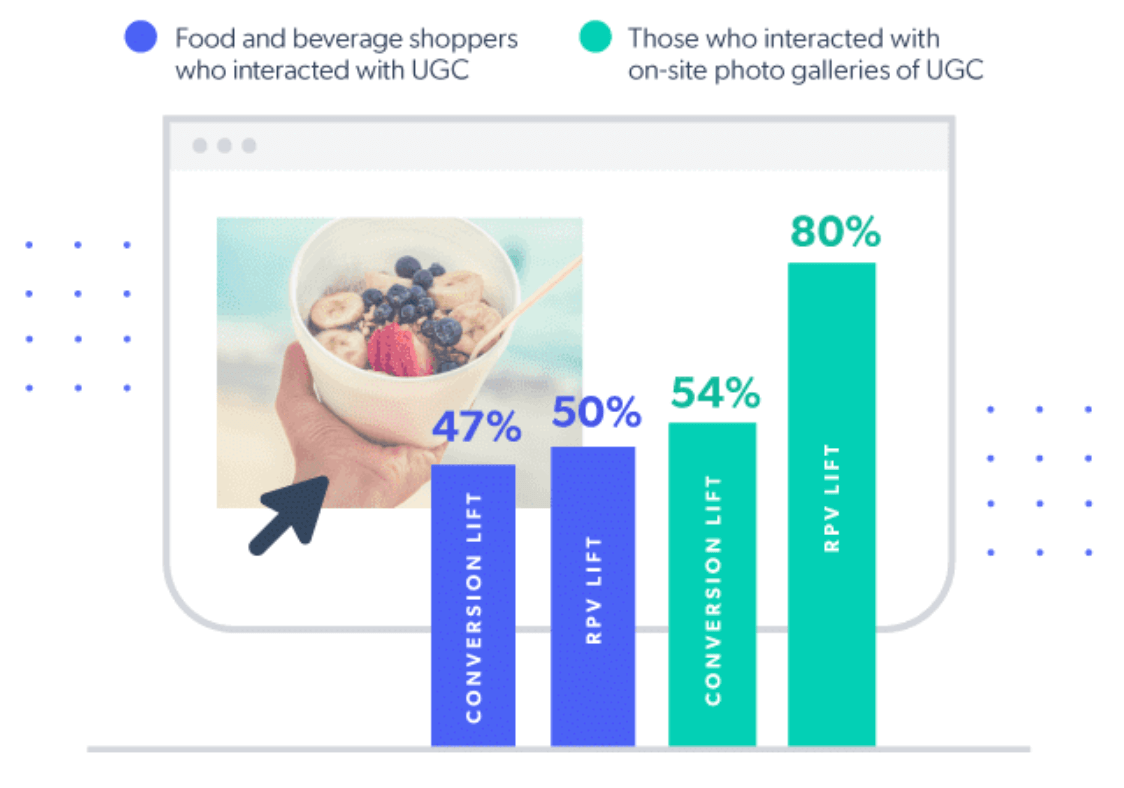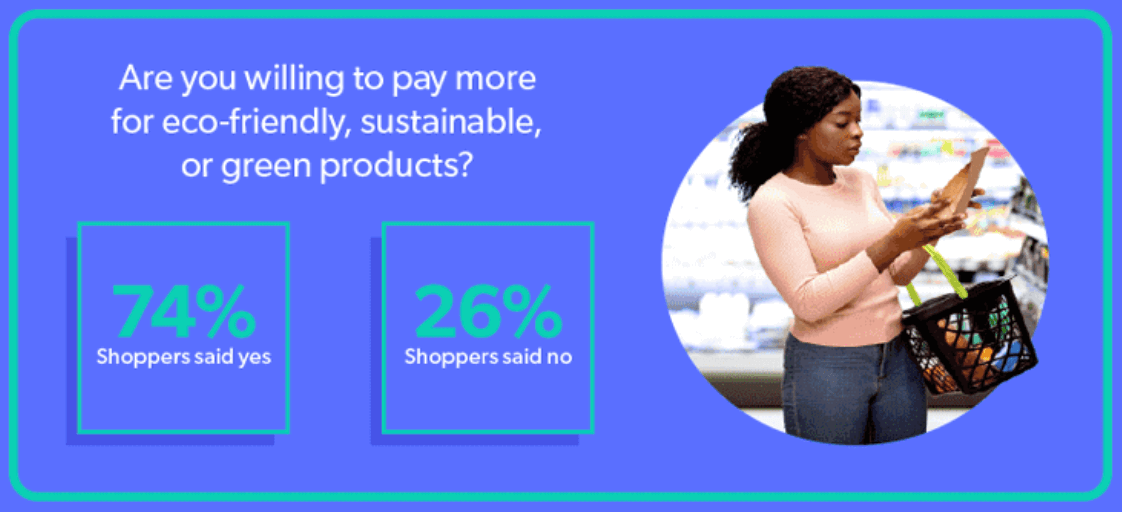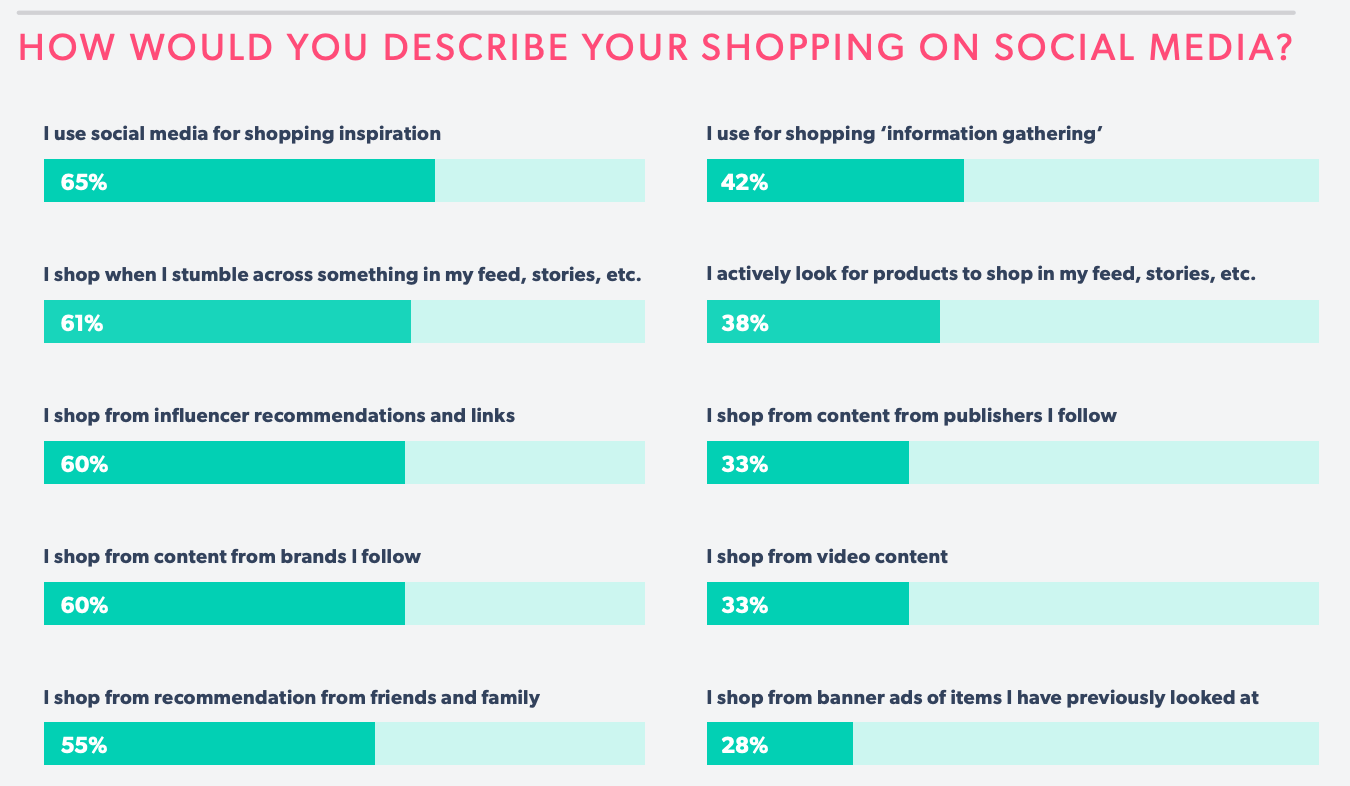
Grocery shopping is a necessity. We’ve all gotta eat, right? Whether it’s doing the big shop on Saturday morning or just picking up a few things after work, the average American visits the supermarket 1.6 times a week. To get these shoppers in your store or on your website buying your products, there’s a number of emerging grocery marketing trends, like focusing on Instagram, you should be paying attention to if you want to drive e-commerce growth.
These days, grocery brands face increased competition for consumers’ food budgets. With inflation causing rising food prices, 42% of consumers say they’re looking for ways to save money on grocery shopping this year, according to McKinsey & Co. Shoppers are also researching promotions, switching to less-expensive brands, and buying private label brand products to slash their grocery bills.
Attracting shoppers now is the latest issue the grocery industry has faced over the past two-plus years. The COVID-19 pandemic changed grocery (and all) shopping habits, spurred the growth of grocery e-commerce, and caused supply chain issues.
Grocery marketing trends for 2023
Bazaarvoice recently attended Groceryshop, the leading event for grocery and consumer packaged goods (CPG), where global retailers and industry experts discussed current trends, as well as what’s next for the industry.
Using insights from the event, and our own industry research, here’s the top six grocery marketing trends for you to incorporate into your strategy to grab the attention of food shoppers and boost e-commerce sales.
1. Capture customer data to offer more personalization
Shoppers want to tell you about themselves, and it’s crucial for you to listen. Encourage ratings and reviews, answer their questions, and engage with them on social media to offer more personalization, which customers are growing to expect.
Companies with stellar personalization programs can generate 40% more revenue than their competitors, according to McKinsey & Co.
With the growth of grocery e-commerce and loyalty programs, retailers and brands have amassed more data than ever. You can see which brands shoppers interact with and ultimately purchase. All of this data can be overwhelming, though. But learning to manage it, such as by using a customer data platform, will help you transition grocery shopping from “transactional to inspirational,” as Instacart CEO Fidji Simo put it during Groceryshop.
Use first-party data to improve the customer experience, empower shoppers, and get ahead of customers. Instacart, for example, makes 300 million grocery item replacements using data to predict the best recommendations for its shoppers.
2. Convenience e-commerce, not just convenience stores
Grocery e-commerce accelerated during the pandemic, and it’s here to stay. Shoppers enjoy the convenience of online grocery pick-up and delivery, but still want to shop in stores. Our 2022 Shopper Experience Index found that 64% of shoppers enjoy hybrid shopping that blends both worlds.
Everyone shops with their phones in hand. Being able to use your phone to scan products and get information about items adds value to the grocery shopping experience. So does visiting an e-commerce grocery site and seamlessly loading up your shopping cart and checking out quickly. No matter how and where they shop, consumers expect similar pricing, promotions, and products in stock across channels, as well as personalized recommendations and deals.
Retailers and brands must take an omnichannel approach and stop thinking about online and in-store shopping as separate entities. Grocery store chain Albertsons, for example, has debuted several digital tools, including curated shopping lists, online meal planning, ready-made meal delivery, and a scan-and-pay mobile tool.

And to create value for omnichannel shoppers, Instacart launched several in-store tools, including electronic shelf tags, smart carts, and digital list-making.
3. Lean into social commerce and shoppable moments
People already spend hours on their phones every day — checking email and scrolling through their social media feeds. But now they’re looking for things to buy, too.
While most brands already sell products on social media, there’s huge opportunities for you to jump on the grocery marketing trend of social commerce by utilizing shoppable content.
Expanding e-commerce beyond your website to social media and even partner sites and email lets you get in front of shoppers wherever they are — and inspire their shopping journeys. Grocery may be behind other industries when it comes to social shopping, but it’s rapidly catching up.


Consumers just want the content to be authentic (more on that below), showcasing real people in real situations. If it feels too scripted, it’ll be a turn-off.
Some ways grocery brands are embracing social commerce and shoppable content include shoppable recipes that link directly to grocery e-commerce sites to purchase ingredients. Shoppable live streaming and short videos are other avenues that brands are exploring, according to brands featured at Groceryshop. These features let shoppers learn about products and purchase them in real time.
4. Make sure your messaging is authentic
Being authentic gains consumer trust, which will inspire them to become loyalists. Younger consumers, especially, expect brands to show up authentically, actively support causes, and share their values. Lean into storytelling to connect with consumers—and make sure your content reflects the real world.
For example, center messaging around affordability and deals to connect with customers as food prices are rising and budgets are stretched. Online grocery shoppers or those who embrace hybrid shopping still care about speed and convenience, but the desire for lower prices remains their priority.
One way to drive authenticity is with user-generated content (UGC). UGC isn’t necessarily a new grocery marketing trend as much as it is a proven method to consistently boost e-commerce sales. 50% of consumers want to see UGC on brand and retail webpages and social channels. According to the 8,000 global consumers we surveyed, this is because:

So give shoppers what they want. Share photos from real customers using products or discussing how they use a certain ingredient in new and exciting ways. This visual UGC connects with consumers more so than professional, highly stylized shots and makes them want to buy things.
And, don’t sleep on written UGC either — retail giants like Walmart are already prioritizing this. Make sure your products feature plenty of ratings and reviews, which are an easy method of boosting shopper confidence and inspiring purchases. The combination of the two as an unbeatable combo.

Working with influencers also heightens authenticity. Consumers trust influencers as much as they trust family and friend recommendations and are inspired to purchase based on their suggestions.
5. Showcase sustainability initiatives
More Americans are moving toward plant-based diets and seeking to live more sustainable lifestyles. In a recent Bazaarvoice survey of 25,000 global shoppers, 60% of respondents said that sustainable/eco-friendly products are important to them.
U.S. sales of plant-based foods alone grew 6.2% in 2021 reaching $7.4 billion, which is an all-time high, according to the Plant Based Foods Association. Food brands and grocery retailers should emphasize their plant-based offerings to attract these customers.
Consumers are concerned about other aspects of sustainability, too. You can connect with them by highlighting your environmental, social, and governance (ESG) policies and values, related to supply chain, packaging, and food production. Not only is this what shoppers want, but they’re willing to pay more for it.

Shoppers think brands have a responsibility to make the world a better place, and they’re more likely to buy items that have a positive impact on the environment. Our own research shows that 51% of consumers look at brand websites for information about their sustainable practices, and they want more content from brands about these initiatives.
Sustainability isn’t exclusively a grocery marketing trend but with today’s consumers, especially Gen Z, will to pay more for green prodcuts, it’s an effective way to drive e-commerce growth.
6. Retail media networks
Retail media networks are a hot grocery marketing trend, expected to only get hotter with retail giants like Amazon and Walmart already in on the act. But first you might be asking what a retail media network (RMN) actually is?
Similar to a brand retailer partnership, a retail media network is where a retailer gives its brand advertising partners access to its first-party customer data and channels, like SMS, email, e-commerce site, and physical stores. This allows for better engagement with customers along the buying journey and allows brands to reach customers while they’re already in the purchasing mindset.
Essentially, the retailer becomes the vendor and the brand becomes the buyer.
This speaks back to our first trend of customer data, because, as Chrissie Hughes of Kelloggs explained during Groceryshop, it’s difficult to get the historically siloed CPG sector to solve problems and approach new opportunities only based on data. This is where retail media networks come in — a single source of data that provides improved insights and better decision making.
Stay tuned for more grocery marketing trends
The grocery sector has seen lots of changes over the past few years. Arguably more than any other. And it’s always on the move. The key to success is always staying on top of emerging trends. But for now, focusing on these grocery marketing trends will help you connect with shoppers in authentic ways, ensuring you maintain healthy e-commerce sales now and well into 2023.





